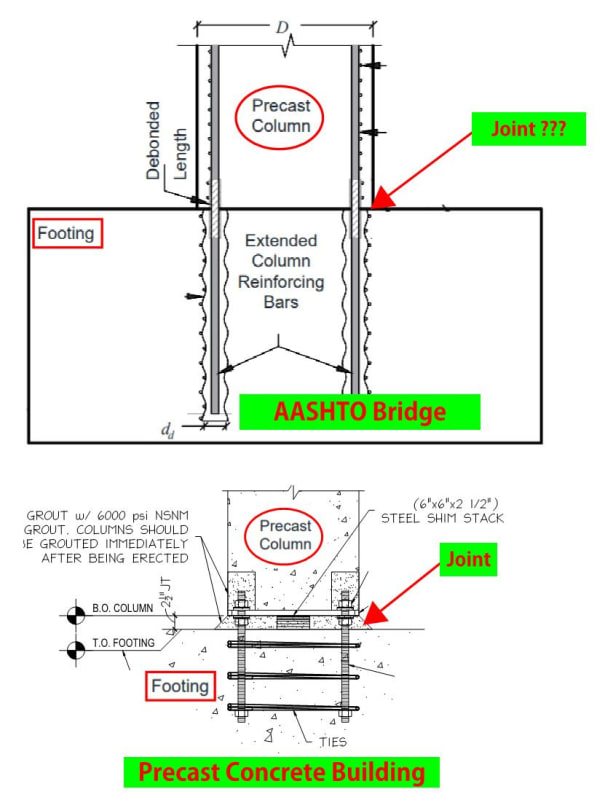JohnRwals
Structural
- Jul 8, 2020
- 151
Hi!
Though I sometimes read papers and articles related with bridge design,
I am not familiar with bridge industry.
I have often seen bridge construction details which do not show any specific
information about the joints.
Isn't this detail important in the bridge design and construction?
As an example, I would like to show two pictures;
these are column to foundation connection details from precast concrete bridge and building.
While precast concrete building detail shows joint width and materials (shim, grout),
bridge detail does not show anything.
Is that because this detail should be used only for design concept?
I wonder why many bridge construction drawings do not show specific info
related with joints like precast concrete column to CIP concrete.
Thanks!
JRW

Though I sometimes read papers and articles related with bridge design,
I am not familiar with bridge industry.
I have often seen bridge construction details which do not show any specific
information about the joints.
Isn't this detail important in the bridge design and construction?
As an example, I would like to show two pictures;
these are column to foundation connection details from precast concrete bridge and building.
While precast concrete building detail shows joint width and materials (shim, grout),
bridge detail does not show anything.
Is that because this detail should be used only for design concept?
I wonder why many bridge construction drawings do not show specific info
related with joints like precast concrete column to CIP concrete.
Thanks!
JRW



